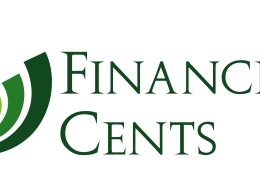Setting the right prices for your products and services is crucial for business success, but determining optimal pricing can be a major challenge. This is especially true for new companies entering competitive markets. The prices you choose directly impact most aspects of your operations, from cash flow and profitability to market positioning. While many factors go into pricing decisions, studying competitor pricing can provide an effective overall strategy when thoroughly implemented.
What Is Competitive Pricing?
Competitive pricing involves setting prices based primarily on the pricing of rival companies selling similar products in your market. Rather than relying solely on internal costs or desired profit margins, you look at competitor pricing benchmarks within your industry. Competitive pricing tends to be most applicable for businesses selling comparable product lines long-term, as prices across competitors often stabilize over time. In this activity, a software called price scraper usually helps retailers analyze competitors and their prices. Based on this data, you can more easily formulate your pricing strategy.
3 Main Approaches to Competitive Pricing
When basing pricing on competitor levels, companies generally have three options:
- Lower Pricing – Set prices below those of competitors in the market. This can be advantageous for companies able to leverage economies of scale or operate more efficiently. Lower competitive pricing may also be used temporarily as part of a loss leader strategy, where products are initially priced below profitability to attract customers and enable selling complementary or higher-margin items. However, sustained low pricing can be risky.
- Higher Pricing – Set prices above those of competitors in the market. This works best when a company can justify charging more by offering superior products or additional features and benefits over rival offerings. Higher competitive pricing is often used by established brands with strong reputations or companies providing premium products compared to other market options. However, the products must support the price premium.
- Matching Pricing – Set prices equal to those of competitors in the market or industry standards. When matching competitor pricing, companies typically look to differentiate themselves through better shopping experiences, quality, and service, or by offering unique product variations. Matching pricing can provide a middle ground between lowering profits with low pricing and curbing demand with high pricing.
Benefits of Competitive Pricing Strategies
When rooted in thorough, ongoing competitive research and price monitoring, competitive pricing can offer several key strategic benefits for businesses across industries. There are a number of advantages savvy companies can realize by effectively leveraging competitor pricing intelligence. Take a look at these benefits:
- Get More Customers – Price lower and price cut promotions can effectively attract shoppers, as well as website visitors; hence, these new targets also make for more velocity in sales.
- Maintain Market Share – The analysis of competitor pricing strategies lets you quickly react to the changes in prices to avoid losing market share while many brands’ customers compare prices.
- Expand Profit Margins – Where the prices are lower than competitors, carefully adjusting prices can be done without losing competitiveness and expanding margins.
- Active Dynamic Pricing – The dynamic pricing system is based on real-time data collection for immediate tracking of the changes in costs, demand, inventory etc and acts based on such information.
- Identify Willingness of Customers to Pay – By assessing competitor pricing, you can get insights into customer value perception and find out willingness to pay. This learning will, therefore, better inform us of optimum pricing methods.
The insights gained from analyzing the competitive landscape can strengthen pricing decisions across the board. When leveraged strategically, the competitive intelligence gained allows companies to boost revenues through differentiated pricing strategies, retain more market share, improve profitability on strategic products, and gain consumer insights. Competitor pricing analysis is crucial for making the most of pricing in competitive markets.
Potential Disadvantages and Risks
However, competitive pricing strategies also come with some inherent drawbacks to be aware of:
- Inability to Cover Costs – A focus solely on matching or beating competitor pricing could mean setting prices too low to cover expenses and overhead.
- Incorrect Competitor Pricing – Basing pricing solely on potentially inaccurate or out-of-date competitor pricing data is risky. It could lead to leaving money on the table or losing market share.
- Implementation Costs – Comprehensive competitive pricing strategies require investment into dedicated personnel and pricing tools, which is especially challenging for newer companies with limited resources.
Examples of Competitive Pricing in Action
Competitive pricing strategies can take many forms across industries and products. For example, a major retailer may choose to implement loss-leader competitive pricing for high-demand electronics like HD televisions. By pricing these items $200 below competitor market prices, they aim to drive customer traffic and purchases of related accessories and extended warranties that produce higher profit margins. This temporary low pricing helps attract customers, and the retailer can then upsell additional items.
Another approach is price skimming, where a software company launching an innovative new data analytics platform might initially price it at $500 per license when first entering the market. As more and more competing products enter the market, the Force may need to gradually lower their pricing until it reaches around $300 per license in order to maintain and increase its market share in the face of competition. The higher initial price which maximizes revenues, is meant to generate the highest income early on while demand is at its strongest.
Premium pricing can also be aided by utilizing competitive pricing intelligence as well. An outdoor apparel company that designates itself in luxury performance apparel jacket using patented waterproof fabrics and intellectual properties on insulation technologies charges its products $50 more than comparative competitive products. It is the higher pricing that they are able to charge due to their brand reputation and the fabrics and coat technologies they sell which are valued by consumer minds.
In order not to compete on the price, the toy manufacturer can choose to match the price with the other competitors for the standard toys they provide to remain in line with the existing market. However, they further differentiate by also developing and selling the specialized toys that are not available from their competitors, which sets them apart. It enables them to recoup the investment in innovation and keep the cost parity on the most basic toys.
Prices are competitive in many ways depending on situations and contexts. Strategically used as part of the overall pricing and positioning, competitive intelligence can be extremely valuable to increase revenues, profitability, and consumer appeal.
To sum up, competitive pricing can be a very good strategy but one which demands in-depth research, monitoring, and implementation underlied by strategies. The price, which is aligned with business costs, price value and price attractiveness, leads to increased revenue and profitability.













